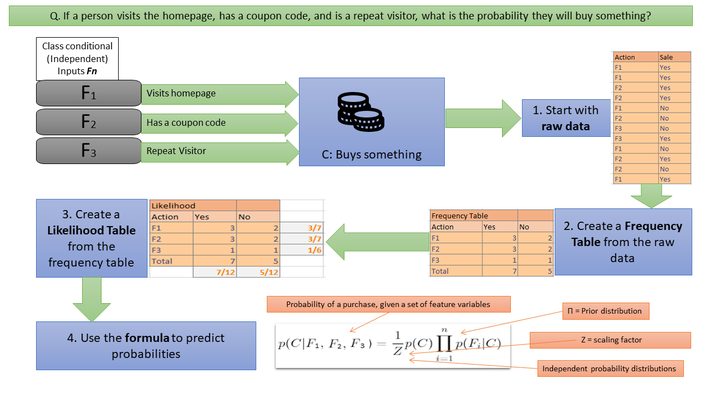Naive Bayes is a deceptively simple way to find answers to probability questions that involve many inputs. For example, if you’re a website owner, you might be interested to know the probability that a visitor will make a purchase. That question has a lot of “what-ifs”, including time on page, pages visited, and prior visits. Naive Bayes essentially allows you to take the raw inputs (i.e. historical data), sort the data into more meaningful chunks, and input them into a formula.

Click on the picture to zoom in
For more articles on naive Bayes, follow this link. For more concepts explained in one picture, follow this link.
